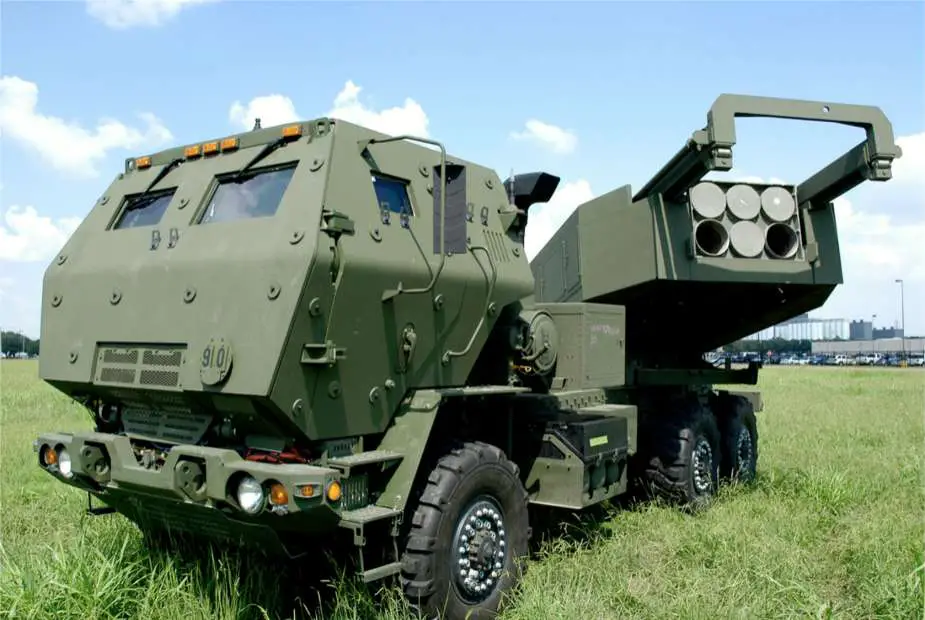Lockheed Martin ramps up production of HIMARS MLRS in response to growing demand
Lockheed Martin, the defense giant, has declared its intention to ramp up the production of its weaponry systems to address the rising global security concerns. This move comes amid the ongoing conflict between Russia and Ukraine, Middle East tensions, and fears of Chinese military actions. Lockheed Martin is set to increase the output of its High Mobility Artillery Rocket Systems (HIMARS), aiming to double its production capacity. The company has already raised its HIMARS production from 48 units per year to 60, to reach an annual production rate of 96 units by the end of 2024.
Follow Army Recognition on Google News at this link

Lockheed Martin has already raised its HIMARS production from 48 units per year to 60, to reach an annual production rate of 96 units by the end of 2024. (Picture source: Lockheed Martin)
Furthermore, Lockheed Martin plans to boost the production of the Javelin anti-tank missile system from its current rate of 2,400 units per year to nearly 4,000 units by the end of 2026. The company is also on track to deliver more than 10,000 Guided Multiple Launch Rocket Systems (GMLRS) this year and aims to increase this capacity to 14,000 units annually by 2025. To further meet the defense demands, Lockheed has invested in expanding the production of its PAC-3 MSE air defense missiles, with a target to reach an annual production rate of 650 units by 2027.
Additional information indicates that Lockheed Martin recorded net sales of $67.6 billion in 2023, compared to $66 billion in 2022, and a net profit of $6.9 billion, or $27.55 per share, compared to $5.7 billion, or $21.66 per share, in 2022. The company also achieved a record backlog of $160.6 billion, reflecting a strong continuous demand for its full technologically advanced defense solutions portfolio.
The High Mobility Artillery Rocket System (HIMARS) is an American-designed mobile artillery system offering a versatile launch platform for various munitions. Capable of launching six MLRS series rockets or one ATACMS tactical missile, HIMARS is designed to provide a quick and precise response to various battlefield threats. This system is equipped to protect against lightarm fire and shell splinters, thus offering some protection to its crew.
HIMARS is used by a variety of countries around the world, including Australia, Canada, Estonia, Finland, Jordan, Latvia, Lithuania, Poland, Romania, Singapore, Ukraine, the United Arab Emirates, and the United States, demonstrating its internationally recognized versatility and effectiveness. With a weight of 10,886 kg, the vehicle can reach a maximum road speed of 85 km/h, allowing for rapid deployment in conflict zones.
The HIMARS firing control system allows for high precision, with firing ranges varying depending on the type of ammunition used: up to 45 km with the ER-MLRS rocket, 70 km with the new extended-range guided GMLRS rocket, and up to 300 km with a tactical missile. This gives it an extended strike capability, capable of engaging long-distance targets and supporting military operations across various combat environments.
HIMARS requires a crew of three for its operation, and its dimensions are 5.046 meters in length, 2.16 meters in width, and 2.251 meters in height, making it relatively compact for a mobile artillery system. This size allows HIMARS to move and position quickly on the battlefield, providing mobile and flexible artillery support for ground forces.
The conflict in Ukraine has also played a key role in accelerating the demand for HIMARS systems, with these rocket launchers having a significant impact on the battlefield by enabling Ukrainian forces to reach targets tens of kilometers behind Russian front lines. In response to this increasing demand, Lockheed Martin plans to boost its HIMARS production to 96 launchers per year, up from 60 currently. This decision follows the delivery of 20 HIMARS to Ukraine by the United States, which has had a significant effect on ground operations.
- Hits: 7383
















